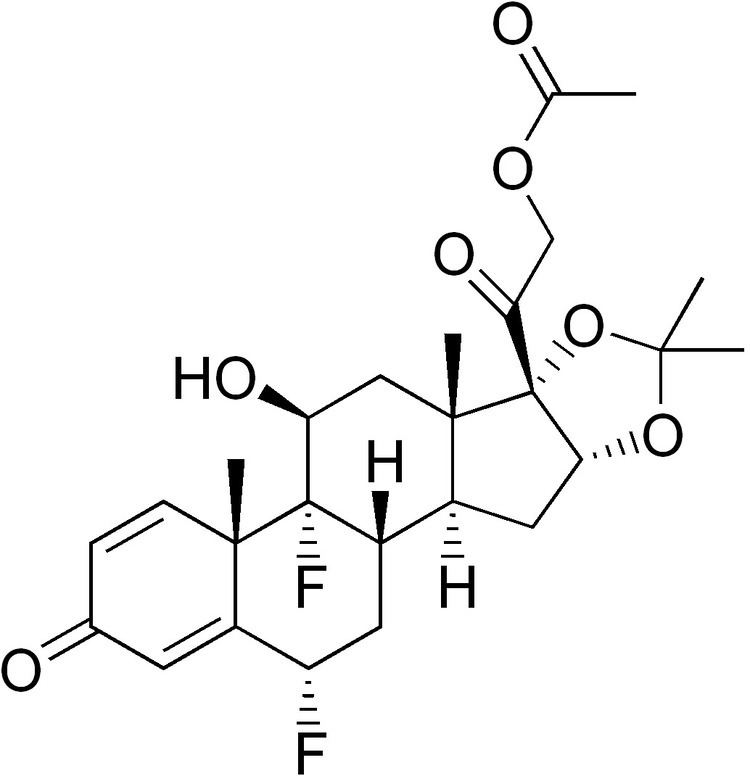Trade names Lidex Pregnancy
category C | MedlinePlus a601054 Routes of
administration topical | |
 | ||
AHFS/Drugs.com Micromedex Detailed Consumer Information ATC code C05AA11 (WHO) D07AC08 (WHO) | ||
Fluocinonide (Fluonex, Lidex, Lidex-E, Lonide, Lyderm, and Vanos) is a potent glucocorticoid used topically as an anti-inflammatory agent for the treatment of skin disorders such as eczema and seborrhoeic dermatitis. It relieves itching, redness, dryness, crusting, scaling, inflammation, and discomfort.
The usual prescription concentration is 0.05% as a topical cream, ointment, solution, or gel. The application area should normally not be covered after application. In certain cases, the physician may recommend the use of an occlusive dressing after application to increase the rate and depth of absorption. The frequency of application depends on the condition being treated and the area affected, but most often it should be applied 2 to 4 times a day.
Fluocinonide ranks as a "high-potency" (second-highest rank) topical corticosteroid. Minimal amounts should be used for a minimal length of time to avoid the occurrence of adverse effects..
Fluocinonide should not be used if infection is present. It should not be applied to the eyes or to sensitive areas such as the genitals or anus.
A common potential adverse effect is skin atrophy (thinning of the skin). Systemic absorption of topical corticosteroids can produce reversible hypothalamic-pituitary-adrenal axis (HPA) suppression, manifestations of Cushing's syndrome, hyperglycemia, and glucosuria in some patients.
Fluocinonide should be used with caution when treating children, pregnant women, nursing mothers, and anyone using the medication for longer than two weeks.
Fluocinonide is used in veterinary medicine. It is a treatment for allergies in dogs. Natural systemic cortisol concentrations can be suppressed for weeks after one week of topical exposure.
